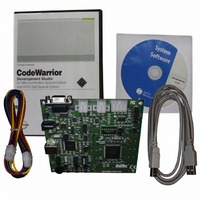DEMO9S12XEP100 Freescale Semiconductor, DEMO9S12XEP100 Datasheet - Page 276

DEMO9S12XEP100
Manufacturer Part Number
DEMO9S12XEP100
Description
BOARD DEMO FOR MC9S12XEP100
Manufacturer
Freescale Semiconductor
Type
MCUr
Datasheet
1.EVB9S12XEP100.pdf
(1328 pages)
Specifications of DEMO9S12XEP100
Contents
Board, Cables, CD
Processor To Be Evaluated
MC9S12XEP100
Data Bus Width
16 bit
Interface Type
RS-232
Silicon Manufacturer
Freescale
Core Architecture
S12
Core Sub-architecture
S12
Silicon Core Number
MC9S12
Silicon Family Name
S12XE
Rohs Compliant
Yes
For Use With/related Products
MC9S12XEP100
Lead Free Status / RoHS Status
Lead free / RoHS Compliant
Available stocks
Company
Part Number
Manufacturer
Quantity
Price
Company:
Part Number:
DEMO9S12XEP100
Manufacturer:
PANASONIC
Quantity:
46 000
Company:
Part Number:
DEMO9S12XEP100
Manufacturer:
Freescale Semiconductor
Quantity:
135
- Current page: 276 of 1328
- Download datasheet (9Mb)
Chapter 6 Interrupt (S12XINTV2)
6.4.1
The CPU handles both reset requests and interrupt requests. The XINT module contains registers to
configure the priority level of each I bit maskable interrupt request which can be used to implement an
interrupt priority scheme. This also includes the possibility to nest interrupt requests. A priority decoder
is used to evaluate the priority of a pending interrupt request.
6.4.2
After system reset all interrupt requests with a vector address lower than or equal to (vector base + 0x00F2)
are enabled, are set up to be handled by the CPU and have a pre-configured priority level of 1. Exceptions
to this rule are the non-maskable interrupt requests and the spurious interrupt vector request at (vector base
+ 0x0010) which cannot be disabled, are always handled by the CPU and have a fixed priority levels. A
priority level of 0 effectively disables the associated I bit maskable interrupt request.
If more than one interrupt request is configured to the same interrupt priority level the interrupt request
with the higher vector address wins the prioritization.
The following conditions must be met for an I bit maskable interrupt request to be processed.
6.4.2.1
The current interrupt processing level (IPL) is stored in the condition code register (CCR) of the CPU. This
way the current IPL is automatically pushed to the stack by the standard interrupt stacking procedure. The
new IPL is copied to the CCR from the priority level of the highest priority active interrupt request channel
which is configured to be handled by the CPU. The copying takes place when the interrupt vector is
fetched. The previous IPL is automatically restored by executing the RTI instruction.
276
Because of an order from the United States International Trade Commission, BGA-packaged product lines and partnumbers
indicated here currently are not available from Freescale for import or sale in the United States prior to September 2010
1. The local interrupt enabled bit in the peripheral module must be set.
2. The setup in the configuration register associated with the interrupt request channel must meet the
3. The I bit in the condition code register (CCR) of the CPU must be cleared.
4. There is no access violation interrupt request pending.
5. There is no SYS, SWI, BDM, TRAP, or XIRQ request pending.
following conditions:
a) The XGATE request enable bit must be 0 to have the CPU handle the interrupt request.
b) The priority level must be set to non zero.
c) The priority level must be greater than the current interrupt processing level in the condition
code register (CCR) of the CPU (PRIOLVL[2:0] > IPL[2:0]).
S12X Exception Requests
Interrupt Prioritization
Interrupt Priority Stack
All non I bit maskable interrupt requests always have higher priority than
I bit maskable interrupt requests. If an I bit maskable interrupt request is
interrupted by a non I bit maskable interrupt request, the currently active
interrupt processing level (IPL) remains unaffected. It is possible to nest
non I bit maskable interrupt requests, e.g., by nesting SWI or TRAP calls.
MC9S12XE-Family Reference Manual , Rev. 1.23
NOTE
Freescale Semiconductor
Related parts for DEMO9S12XEP100
Image
Part Number
Description
Manufacturer
Datasheet
Request
R
Part Number:
Description:
Manufacturer:
Freescale Semiconductor, Inc
Datasheet:
Part Number:
Description:
Manufacturer:
Freescale Semiconductor, Inc
Datasheet:
Part Number:
Description:
Manufacturer:
Freescale Semiconductor, Inc
Datasheet:
Part Number:
Description:
Manufacturer:
Freescale Semiconductor, Inc
Datasheet:
Part Number:
Description:
Manufacturer:
Freescale Semiconductor, Inc
Datasheet:
Part Number:
Description:
Manufacturer:
Freescale Semiconductor, Inc
Datasheet:
Part Number:
Description:
Manufacturer:
Freescale Semiconductor, Inc
Datasheet:
Part Number:
Description:
Manufacturer:
Freescale Semiconductor, Inc
Datasheet:
Part Number:
Description:
Manufacturer:
Freescale Semiconductor, Inc
Datasheet:
Part Number:
Description:
Manufacturer:
Freescale Semiconductor, Inc
Datasheet:
Part Number:
Description:
Manufacturer:
Freescale Semiconductor, Inc
Datasheet:
Part Number:
Description:
Manufacturer:
Freescale Semiconductor, Inc
Datasheet:
Part Number:
Description:
Manufacturer:
Freescale Semiconductor, Inc
Datasheet:
Part Number:
Description:
Manufacturer:
Freescale Semiconductor, Inc
Datasheet:
Part Number:
Description:
Manufacturer:
Freescale Semiconductor, Inc
Datasheet:











